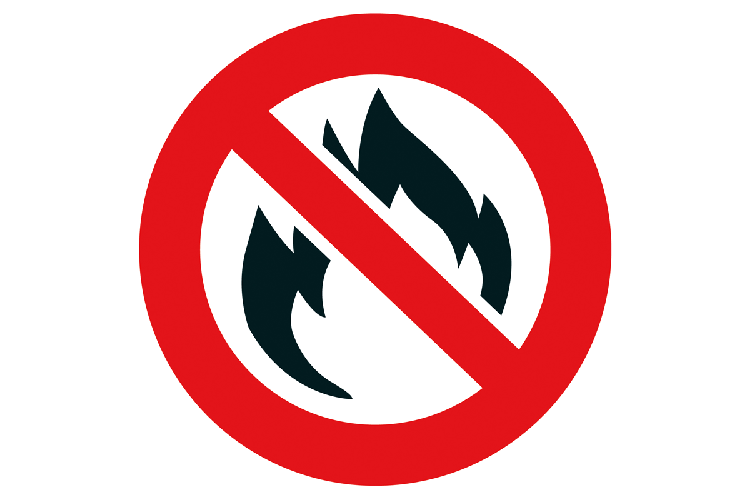Campfires are a great source of warmth and can be useful for cooking, but they can also easily turn into bushfires. If you start a campfire, you need to put it out with water and make sure it goes out completely. Learn how to build and enjoy a campfire without accidentally starting a bushfire.
Don't let your campfire turn into a bushfire
It is your responsibility to make sure your campfire is safe, doesn't spread and is put out completely.
Water is the only way to completely put out a fire
Always have 10 litres of water nearby to put out your fire. This can be water from a hose or in a bucket.
Don't use soil or dirt to put out a campfire. The hot embers can smoulder under soil and start burning again. They can also cause serious burns.
When the ashes are cool to touch, it is safe to leave.
Check fire restrictions before you light a fire
Fire restrictions for campfires can vary depending on the fire risk on that day or at that time of year.
If fire restrictions are in place, you might not be allowed to have a campfire.
Below are the type of fire restrictions which you need to be aware of and what they involve.
Do not light campfires on Total Fire Ban days

CFA declares a Total Fire Ban on days when fires are more likely to spread quickly and be difficult to control. They are announced on our restrictions page, on VicEmergency and in the media.
Lighting a fire during a Total Fire Ban is illegal. You could be fined more than $40,000, be sentenced to two years in prison, or both.
You also cannot leave a campfire burning through the night into the morning of a Total Fire Ban day.
Use a BBQ to cook on Total Fire Ban days
You can use an electric or gas BBQ to cook your food during a Total Fire Ban instead of a campfire. But it must meet specific conditions.
Fire Danger Period restrictions
CFA declares a Fire Danger Period when there is an increased fire risk. A range of activities are banned or must be done differently during the Fire Danger Period.
The Fire Danger Period starts and ends at different times in each council area in Victoria. It usually starts before summer and continue until the weather cools down in April or May.
If the Fire Danger Period has come into effect in the area you are in, you can only light a campfire if it meets the following conditions:
1. Wind Speed
The wind needs to be less than 10 km per/hr. The wind speed is low enough if the leaves in the trees are still or only gently moving. If small branches on trees are moving, the wind is above 10 km per/hr.
2. Structure and placement
The campfire must be in:
- a properly built fireplace of stone, metal or concrete
or
- a trench at least 30cm deep
If you can, use a fireplace such as a barbecue pit or existing fire pit, or, use a ring of large rocks to build one. If you are in a national or state park, campfires can only be lit in the purpose-built fireplaces provided by the park.
Three metres around and above the campfire must be clear of anything that can burn. This includes dry grass, leaves, branches, shrubs and trees. It also includes tents and other flammable camping gear.
3. Size
The campfire must be no larger than one metre by one metre.
4. Supervision
Never leave a campfire unattended. There must be someone awake and alert near the campfire at all times.
Always watch children around campfires. There is a high risk of burns.
5. Putting out the fire
The campfire must be put out completely using water before you leave. Do not leave until ashes are cool to touch.
Don't use soil. The embers can smoulder beneath the soil and start burning again later.
Campfire safety checklist
- Check local fire restrictions.
- Check campfires are allowed where you are.
- Have 10L of water in a bucket on site or a hose.
- Campfire is at least three metres away from tents and other equipment, including gas bottles and fuel.
- No branches, leaves or other items are within three metres around and above campfire.
- Campfire is in an existing fire place or one you've made by digging a hole surrounded by large rocks.
- Campfire is small, less than one square metre.
- Someone can see the fire at all times.
- Children are supervised at all times.
- Put the fire out using water.
- Leave when the ashes are cool to touch.
For more information
Campfire guidelines for public parks.
Campfire guidelines for state forests.
If you're on private land, such as in a caravan park, follow the rules and guidelines of the owner.
Page last updated: Friday, 19 September 2025 1:54:33 PM